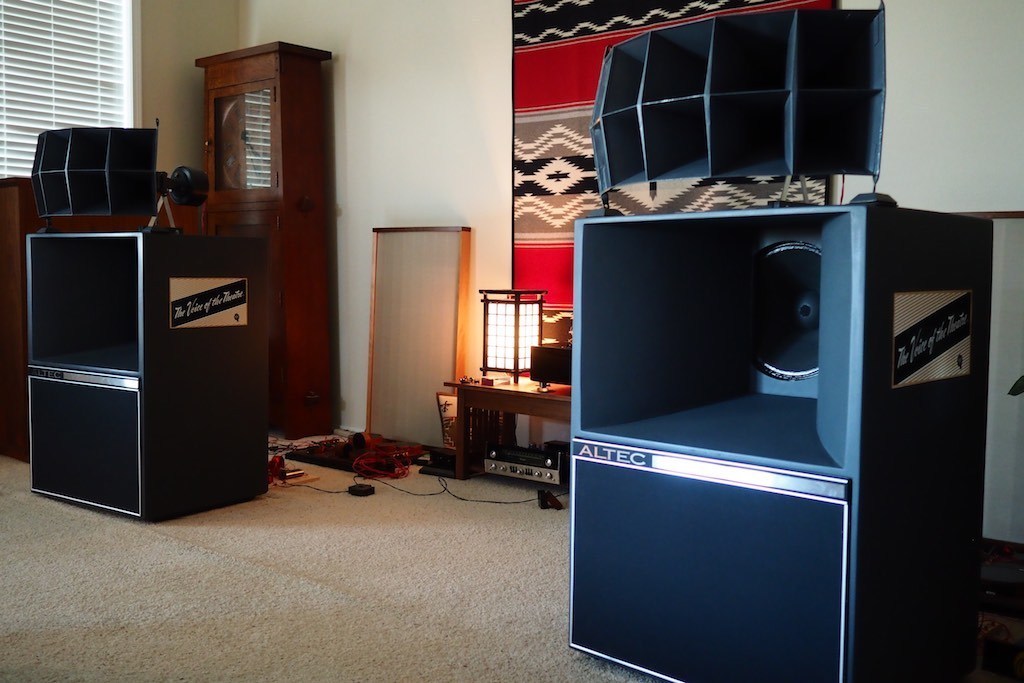♫ Altec 832A Corona

1957-1958 vintage Altec 832A Corona loudspeakers shown with Tannoy Westminster Royal SE's as a size comparator.
I bought a pair of vintage Altec 832A Corona loudspeakers that were for sale from LA Jazz Audio, shown above next to my Tannoy Westminster Royal SE loudspeakers.
I am absolutely crazy in love with these vintage Altec 832A Corona loudspeakers, they are truly something special, and make music come alive with a live-likeness that few speakers can approach!
These vintage Altec Corona loudspeakers components compliment are the 803A bass drivers (1947-1958), 802D compression drivers (1957-1972), 811B HF horns, and N800E crossovers.
That components complement would place their production circa 1957-1958, which is about the same time I was produced, so they are now over six decades old and perform like they are brand new off the showroom floor, unlike me.

1957-1958 vintage Altec 832A Corona loudspeakers with California Modernist style of cabinets made by Glenn of California.
One of my local audio pals asked me how the 832A Corona's differ from the more ubiquitous vintage Altec Valencia loudspeakers, which are another fine vintage Altec loudspeaker model, so I thought I'd share my response with you too.
The main difference is the Altec 832A Corona's cabinets were designed so they can be easily placed in room corners like corner horns, although they're not actually a true corner horn as the bass driver is not horn-loaded, whereas the Valencia's are a more traditional ported box loudspeaker.
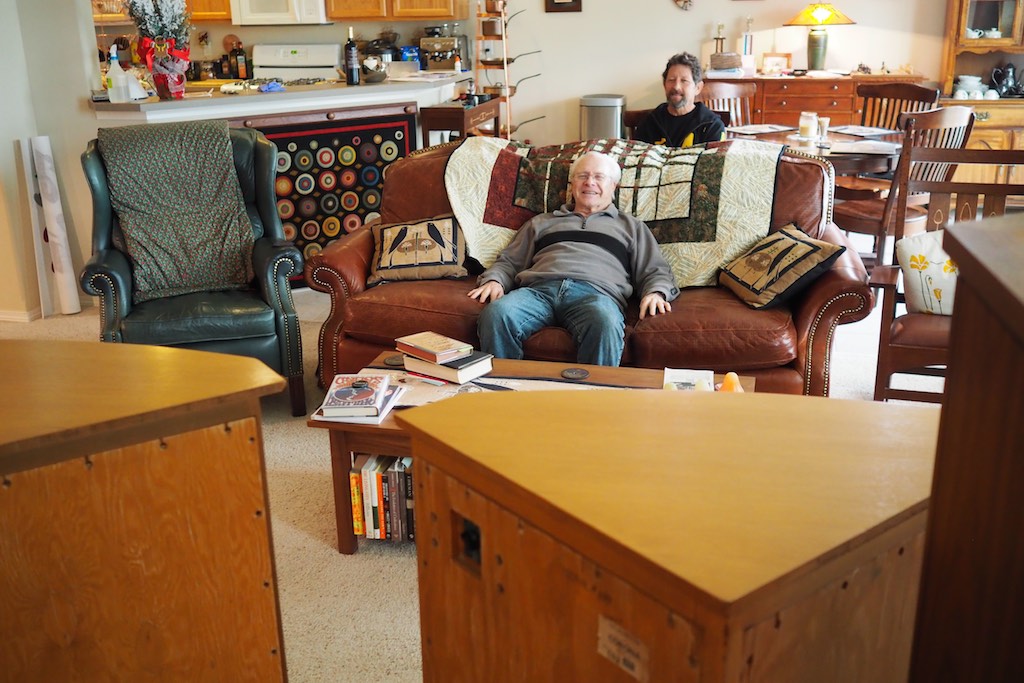
The Altec 832A Corona loudspeakers triangular cabinets gives them a nice appearance and allows them to fit well into room corners.
I've found that the 832A Corona's can also sound pretty good as free-standing loudspeakers with their "sealed" cabinet backs, rather than having a semi-open back that makes the wall part of an extended horn.
The Corona's benefitted from being placed closer to the front wall in my preliminary listening, which gave them a more natural overall balance.
The Altec 832A Corona's drivers, horns, and crossovers, are similar to the component complement used in a pair of Valencia 846A's, for example, which typically have 416-16Z bass drivers, 806A compression drivers, H-811B HF, and N-800F crossovers, and which are, very simplistically speaking, later versions of the Corona's earlier versions.
Another difference between the Corona's and Valencia's is that the Corona's (and Laguna's) had cabinets that were custom made for Altec by Glenn of California, which was a craft furniture maker producing furniture in the California Modernist style that was popular in the 1940s-1950s, and the cabinets were one of the Corona's selling points.
Customers could order Corona's or Laguna's and they were styled to complement the Glenn of California furniture they had in their home, and as such were intended to "disappear" into the corners as functional furniture so they weren't too room dominating. They were considered to be high-performance "art speakers" for a well decorated Glenn of California furnished home.
When I saw this pair of vintage Altec Corona loudspeakers for sale at LA Jazz Audio, I was reminded of what Keith Aschenbrenner of Auditorium 23 told me a few years ago, that the 803A Altec driver was one of his all-time favorite low-frequency drivers, which of course added to the intrigue I had for this particular pair of Corona's.
Back in the day, Altec recommended the 803A drivers over the 515B low-frequency drivers (like I have in my A5's) for smaller venues and for home systems, as they had more presence.
The vintage Altec A5's (below) and A7's, are big loudspeakers that are intended for pro applications in studios, theaters, and auditoriums, and they used large horns that crossed over at 500Hz.
The Corona's and Valencia's use the smaller Altec 811B HF horns, and both cross over at 800Hz.
The idea behind their smaller horns was to keep the size of the loudspeaker enclosure smaller and less obtrusive for home use, than with the larger horns typically used in the A5's and A7's where size only mattered in the context of the volume of the space you're trying to fill with sound.
The Corona's are still fairly large speakers at W37 3/8" X H39" X D24 3/8", and about 122 pounds each, but are much smaller than their more industrial cousins, the A5's and A7's.
The Corona's sold for $762 a pair in 1957, which in 2018 dollars would be about $6700. A Chevrolet Corvette sold for $3176 in 1957 as a comparator.
Currently I am using my Corona's in my master bedroom system. My house has a bit of an unusual design in that the master bedroom is the second largest room in my modestly sized home, and is almost as large as my main music listening room, which is my living room.
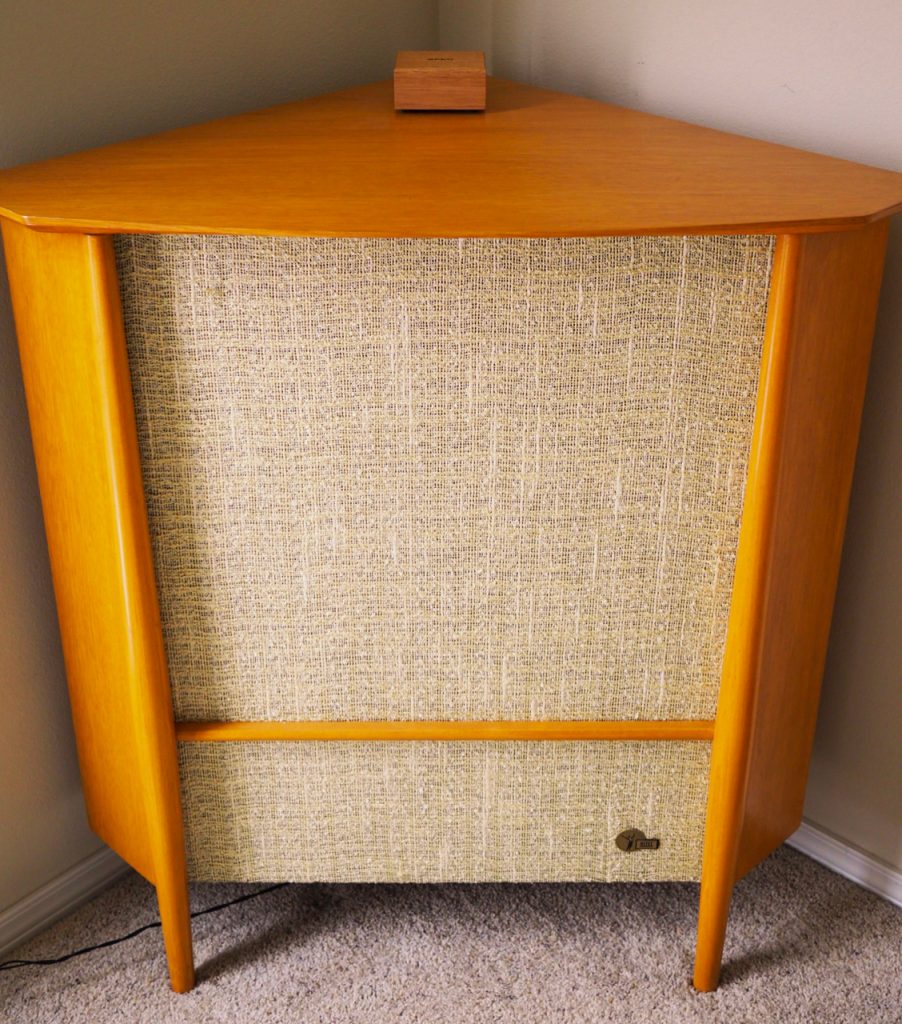
Vintage Altec Corona 832A loudspeakers with Spec RSP-AZ9EX Real Sound Processors
With the Corona's placed in room corners as they are intended to be their performance is absolutely magic, with superb tone, startling dynamics, vivid presence, and a captivating musicality that I never seem to get tired of.
I use a pair of Spec RSP-AZ9EX Real Sound Processors with my Corona's that Yazaki-san made for them, which was a nice addition, and improved their performance nicely. The pair of RSP-AZ9EX consist of high-quality Zobel circuits that provides impedance equalization to counteract the rising impedance of the voice coils caused by inductive reactance, and makes life easier for the amplifier driving it.
For speaker cables I am using Duelund DCA16GA tinned-copper wire, one of my favorites, and which is an excellent match to the Almarro A205A amplifier (below) and 832A Corona loudspeakers.
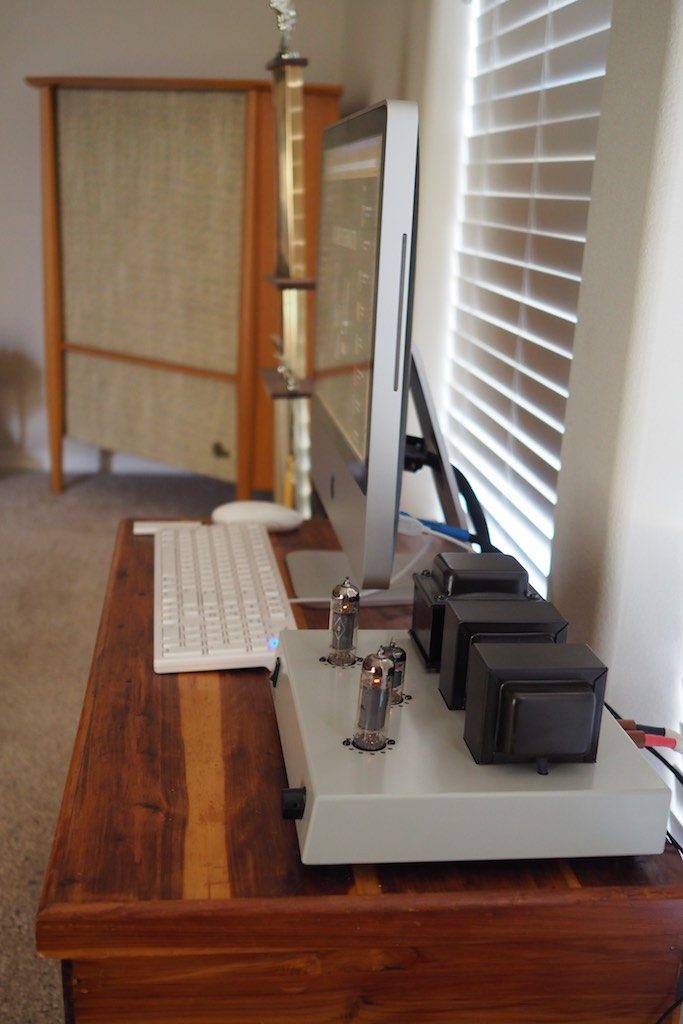
Almarro A205A powering the vintage Altec 832A Corona loudspeakers.
The superb little Almarro A205A EL84 based single-ended-pentode stereo amplifier powers the highly sensitive Corona's easily, and it is a great match, with it's 5 watts of output driving the Corona's easily to live-like levels.
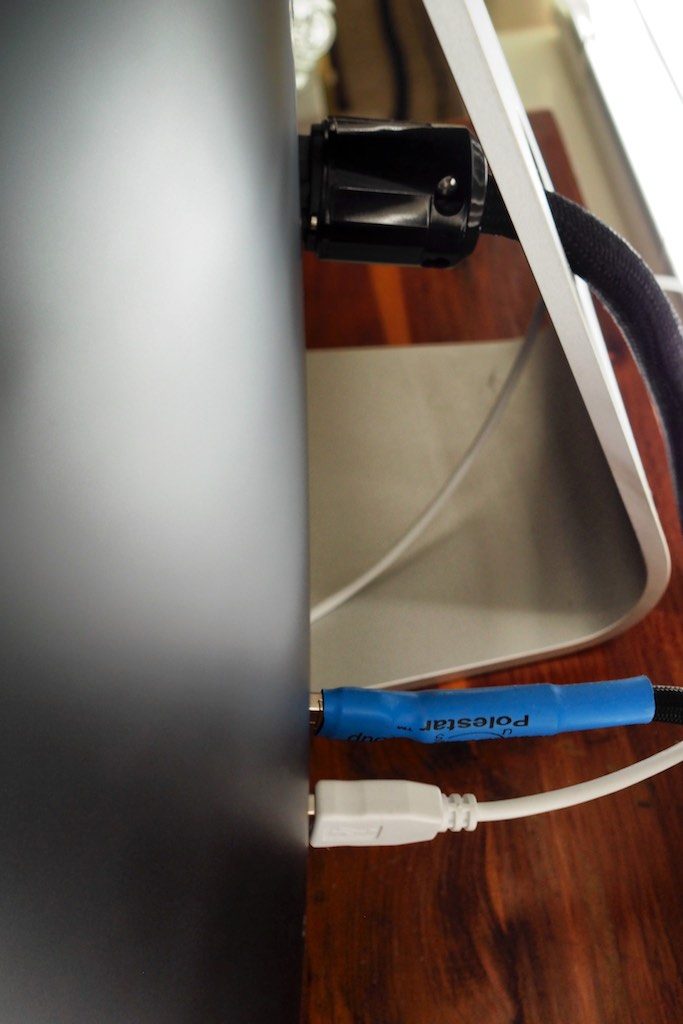
Locus Design Group Polestar USB interconnect.
I'm using an Apple iMac as a source, streaming Jazz24 (usually) to a MHDT Lab Paradisea+ USB DAC via a Locus Design Group Polestar USB interconnect. The Paradisea+ rests atop an Acoustic Revive Quartz Underboard for isolation.
The power cord I use for the Paradisea+ USB DAC is the superb Sablon Audio The Robusto AC power cords, one of my all-time favorite power cords.
Interconnects from the Paradisea+ to the Almarro A205A are the superb Belden 8402 microphone cable interconnects that our friend Yazaki-san enjoys so much!
This system is just getting started, as I need to pick up an audio rack for it and a few other things, but for those evening listening sessions I totally marvel at how musically engaging and life-like this system is!
More to come on this vintage Altec 832A loudspeaker based system as I get a chance to develop it a little more!
As always, thanks for stopping by, and may the tone be with you! 🙂





